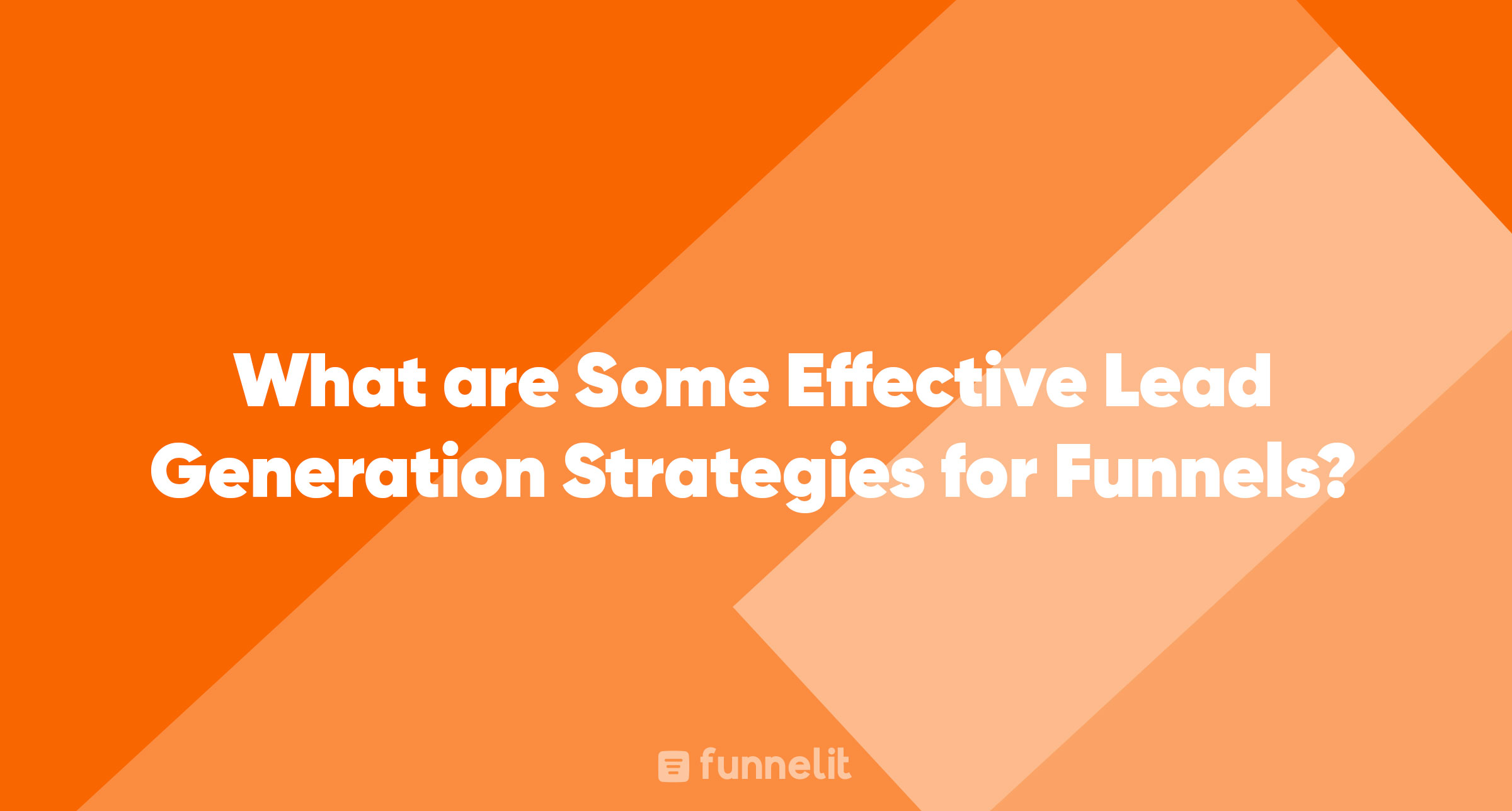Lead generation has become a vital aspect of any successful marketing strategy. Small businesses and B2B companies alike are constantly seeking effective ways to generate leads and convert them into loyal customers. In this article, we will explore the key strategies and tactics that can help businesses build an efficient lead generation funnel. By implementing these strategies, businesses can attract potential customers, nurture their interest, and guide them towards making a purchase.
Understanding the Lead Generation Funnel
Before diving into the specific strategies, it's important to have a clear understanding of what a lead generation funnel is. A lead generation funnel is a systematic approach to attracting and converting potential customers into qualified leads. It consists of several stages that map out the customer journey from awareness to conversion. The stages of a typical lead generation funnel include:
- Awareness: This is the top of the funnel stage, where businesses capture the attention of potential customers and make them aware of their products or services.
- Interest: In this stage, businesses aim to nurture the interest of potential customers by demonstrating the value and benefits of their offerings.
- Consideration: At this stage, businesses focus on highlighting specific products or services that meet the needs and desires of potential customers.
- Action: The action stage is where businesses encourage potential customers to take the desired action, such as making a purchase or signing up for a trial.
- Conversion: The final stage of the funnel is where businesses successfully convert potential customers into paying customers.
Effective Lead Generation Strategies for Each Funnel Stage
To effectively generate leads and move them through the funnel, businesses need to employ targeted strategies for each stage. Let's explore some effective strategies for each stage of the lead generation funnel.
1. Awareness Stage Strategies
At the awareness stage, businesses aim to capture the attention of potential customers and introduce their brand. Here are some effective strategies for this stage:
- Content Marketing: Create engaging and informative content, such as blog posts, videos, and infographics, that addresses the pain points and challenges of your target audience.
- Search Engine Optimization (SEO): Optimize your website and content for search engines to improve visibility and organic traffic. Conduct keyword research to identify relevant search terms and incorporate them into your content.
- Social Media Marketing: Leverage social media platforms to share valuable content, engage with your audience, and build brand awareness. Use targeted advertising to reach potential customers based on their demographics, interests, and behavior.
2. Interest Stage Strategies
Once potential customers are aware of your brand, it's crucial to nurture their interest and keep them engaged. Here are some strategies for the interest stage:
- Lead Magnets: Offer valuable resources such as ebooks, whitepapers, or webinars in exchange for potential customers' contact information. This allows you to continue nurturing their interest through email marketing.
- Email Marketing: Develop personalized email campaigns to provide relevant content, product updates, and special offers to potential customers. Segment your email list based on the interests and actions of subscribers to deliver targeted messages.
- Webinars and Events: Host webinars or participate in industry events to showcase your expertise and provide valuable insights. These platforms allow you to engage directly with potential customers and establish credibility.
3. Consideration Stage Strategies
In the consideration stage, potential customers are evaluating different options and deciding which one best meets their needs. Here are some strategies to guide them towards choosing your business:
- Case Studies and Testimonials: Share success stories, case studies, and testimonials from satisfied customers to demonstrate the effectiveness and value of your products or services.
- Free Trials and Demos: Offer free trials or product demos to potential customers, allowing them to experience the benefits of your offerings firsthand. This helps build trust and confidence in your brand.
- Remarketing: Utilize remarketing tactics to target potential customers who have shown interest in your brand or visited your website. Display relevant ads to remind them of your offerings and encourage them to take the next step.
4. Action Stage Strategies
At the action stage, businesses aim to convince potential customers to take the desired action and make a purchase. Here are some strategies to drive conversions:
- Clear Call-to-Action (CTA): Use compelling and clear CTAs throughout your website and marketing materials to prompt potential customers to take action. Make it easy for them to complete the desired action, such as adding a product to their cart or signing up for a subscription.
- Limited-time Offers: Create a sense of urgency by offering limited-time promotions or discounts. This can motivate potential customers to make a purchase sooner rather than later.
- Customer Support: Provide excellent customer support to address any concerns or questions potential customers may have. Promptly respond to inquiries and provide detailed information to help them make informed decisions.
5. Conversion Stage Strategies
Even after a potential customer has made a purchase, businesses should continue to nurture the relationship to encourage repeat purchases and foster loyalty. Here are strategies for the conversion stage:
- Upselling and Cross-selling: Recommend complementary products or upgrades to existing customers to increase the average order value. Personalize your recommendations based on their previous purchases and preferences.
- Customer Loyalty Programs: Implement customer loyalty programs to reward and incentivize repeat purchases. Offer exclusive discounts, rewards, or early access to new products for loyal customers.
- Customer Feedback and Reviews: Encourage customers to leave reviews and provide feedback on their experience with your brand. Positive reviews can attract new customers and enhance your brand reputation.
Conclusion
Building an effective lead generation funnel requires a strategic approach and the implementation of targeted strategies for each stage. By raising awareness, nurturing interest, guiding consideration, driving action, and fostering conversion, businesses can generate high-quality leads and maximize their chances of turning them into loyal customers. Remember to continuously analyze and optimize your lead generation strategies based on data and customer feedback to ensure long-term success.
